Table of Contents
ToggleLEADERSHIP INTRODUCTION
Leadership does not mean dominating the subordinates as it is the case with leadership; however, the leader’s job is to get work done by other people, and make people willingly want to accomplish something. So effective leadership means effective and productive group performance.
Leadership is the process of influencing the thoughts and actions of other people to attain the desired objectives.
Leadership is the ability to influence and secure the cooperation of others to work to achieve certain goals without use of force.
Leading means influencing and inspiring people in such a way that they feel motivated to do their jobs. People find it easier to follow a leader. Following the orders of a manager is something that is done as a part of one’s job, but following a leader is something that is done more willingly by people.
Thus, every manager must aim at becoming a good leader. A leader focuses on interpersonal relations with each employee and constantly motivates them to perform better. By creating a positive working environment a leader can effectively help improve the employees’ job performance and hence their morale.
A leader is an individual who is able to direct activities of other people because he or she possesses the qualities and skills that the followers may not have.
OR
A leader is an influential person who has the ability to lead a group or department without necessarily holding a formal position.
An Effective Leader is a person who can induce followers to contribute voluntarily to the achievement of group tasks in a given situation.
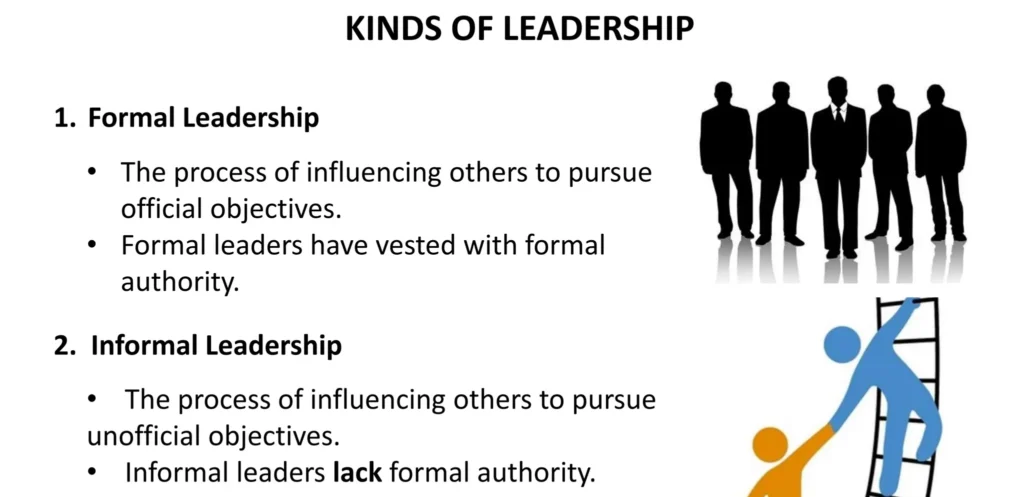
Kinds of leadership.
A leader may be formal or informal.
- Formal leadership: A leader is formal if he has legitimate authority conferred to him by position in organization and described in job description.
- Informal leadership: leadership is informal when a staff member who does not have a specified management role, not appointed, exercises leadership.
An effective and efficient leader or manager
- Effectiveness is the degree to which an objective is being or has been achieved. e.g. if a health unit sets 100 children to be immunized against measles in a particular week and achieves 95%, we shall say the work has been managed effectively. The effective manager is one who achieves the set objective or target.
- Efficiency is the measure of the relationship between the results obtained (output) and the effort-resources (input) expended. This concept has a focus on people, or human resources, and on the way they work. It also involves time put in and money and other resources to perform a particular task. Efficiency can also mean the ability to produce satisfactory results with an economy of effort and a minimum wastage. We can simply put it that an efficient manager is one who achieves his targets/objectives with the planned available resources. The more minimal the resources (input) the manager uses to achieve the maximum results (output) the more efficient he is.
Factors that affect efficient leadership
Factors that affect efficient leadership can be both internal and external.
- Lack of devotion on the part of the leader: A leader who lacks dedication and commitment to their role may struggle to inspire and motivate their team. Devotion is important for effective leadership as it sets an example for others to follow.
- Task/position-centered approach: Leaders who focus solely on completing tasks and meeting goals without considering the needs and expectations of their team members may hinder efficient leadership. A leader should prioritize building relationships, understanding individual strengths, and providing support to ensure the team’s success.
- Conflicts between needs and expectations: Conflicts can arise when there is a mismatch between the needs and expectations of the leader and their team members. It is important for leaders to be aware of these conflicts and find ways to address them through effective communication, collaboration, and compromise.
- Failure to get feedback: Leaders who do not actively seek feedback from their team members may miss out on valuable information and perspectives. Feedback is important for growth and improvement, and leaders should create a culture that encourages open and honest feedback.
- Inflexibility in decision-making: Leaders who are rigid and unwilling to adapt their decision-making approach may hinder efficient leadership. It is important for leaders to be open to new ideas, consider different perspectives, and be willing to adjust their decisions based on changing circumstances.
- Unwillingness to accept criticism: Leaders who are resistant to criticism may create a negative work environment and hinder efficient leadership. Constructive criticism helps leaders identify areas for improvement. Leaders should be open to feedback and view criticism as an opportunity for growth.
- Ineffective delegation: Leaders who struggle with delegation often take on too much themselves, which can lead to burnout and hinder their ability to focus on strategic projects. Effective delegation involves identifying tasks that can be delegated and providing the necessary support and guidance to team members.
- Poor communication: Communication is essential for effective leadership. Leaders need to establish open and transparent communication channels, listen to their team members, and address any concerns or issues. Without effective communication, shared goals may not be reached, and misunderstandings can occur.
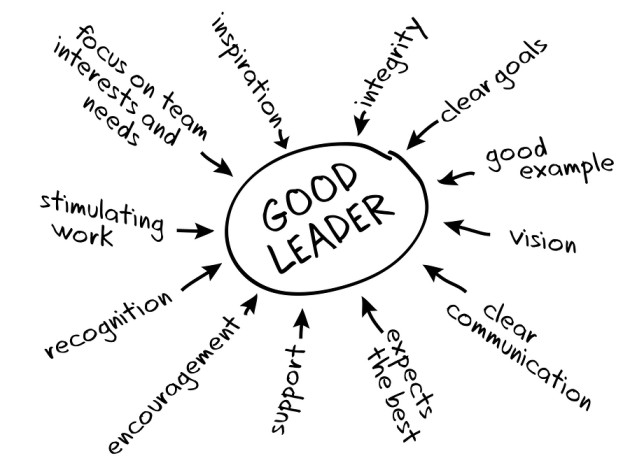
Qualities of a Good Leader
- Authenticity: A great leader is genuine and stays true to who they are, showing their best qualities and building trust with others.
- Curiosity: Great leaders have a mindset of curiosity, constantly seeking new experiences, perspectives, and possibilities.
- Analytical power: Leadership requires the ability to break down complex problems, identify root causes, and make informed decisions based on data and expertise.
- Adaptability: Good leaders are able to adjust to ever-shifting demands and embrace new opportunities and challenges.
- Creativity: Leaders cultivate an environment that nurtures creativity in others and recognizes the value of different perspectives and innovative ideas.
- Resilience: Successful leaders exhibit resilience, i.e they withstand and recover quickly from difficulties and seek input from others to stay on course.
- Empathy: Understanding and connecting with others on an emotional level is a key trait of strong leadership, improving relationships and building trust.
- Flexibility: Good leaders are adaptable and open to change, willing to adjust their plans and strategies as needed.
- Vision: Leaders have a clear vision of where they want to go and inspire others to work towards that vision.
- Confidence: A good leader exudes confidence, inspiring trust and providing reassurance to their team.
- Competence: Leaders possess the necessary skills and knowledge to effectively lead and guide their team.
- Credibility: Good leaders are trustworthy and have a track record of delivering on their promises.
- Action-oriented: Leaders take initiative and are proactive in driving progress and achieving goals.
- Hopeful: Effective leaders instill hope and optimism in their team, even in challenging times.
- Ability to lead and follow: Good leaders know when to take charge and lead, but also recognize the importance of listening and following others’ expertise.
- Trustworthiness: Leaders are reliable and trustworthy, creating an environment of trust and transparency.
- Optimism: Positive leaders maintain an optimistic outlook, inspiring and motivating their team.
- Caring: Good leaders genuinely care about the well-being and success of their team members.
- Ability to bring out the best in people: Effective leaders have the ability to recognize and develop the strengths of their team members, bringing out their full potential.
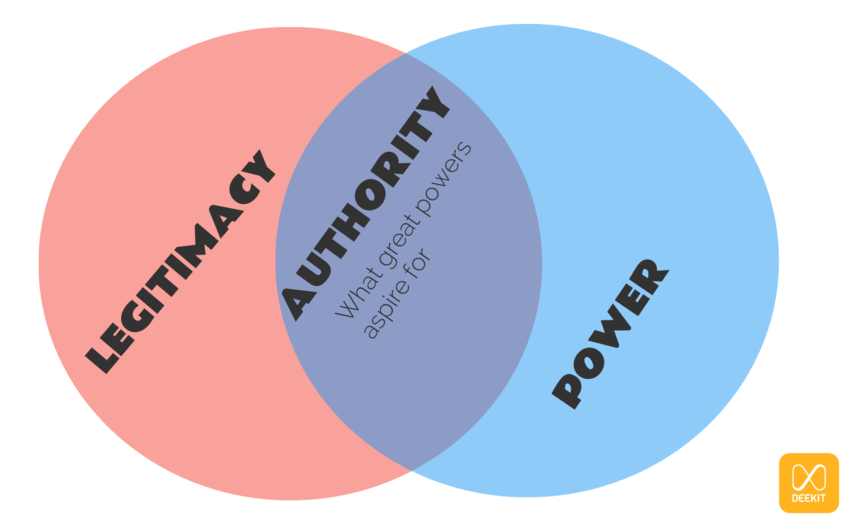
POWER AND AUTHORITY IN LEADERSHIP
For effective leadership, one should exercise power and authority.
Power:
- Is the ability to induce people to accept your orders.
- It is the potential ability to influence others in order to achieve goals.
Legitimacy:
- Is the acceptance of the exercised power.
Authority: = Power+ Legitimacy
- That is to say; Authority= power (The potential ability to induce people to accept orders) + legitimacy (The acceptance of the exercised power-acting on the orders given);
- Authority is a right(legitimacy) to give orders and the power to exert obedience. It is a legitimate right to give orders and the power to exert obedience.
TYPES OF POWER/BASES OF POWER
There are mainly five types of powers divided into two categories namely: Position Powers and Personal Powers. Each of these also has subsets of powers.
A Person in a Managerial Position has:
- Legitimate power.
- Coercive power.
- Reward power.
Personal powers which include:
- Expert power
- Referent power
1. Legitimate power. It refers to the power and influence derived from formal positions in the organizational hierarchy. It is based on the belief that individuals in certain positions have the right to exert authority and make decisions that affect others within the healthcare setting. This power is granted through organizational structures and job titles. This means that you have technical power to treat patients and manage resources that are within the health facility. No other person has this power except you in the health profession. It is usually associated with the job and rank in the organization hierarchy e.g staff will always comply with the in-charge or supervisors’ directives such as keeping time, not missing duty etc. Because they know she/he is their boss.
2. Coercive power. Coercive power is a type of power that relies on the use of force, threats, or punishment to influence others and achieve desired outcomes. This means a manager may exercise some force when you see that certain tasks are not being performed as expected. For instance; cleaning the health facility every morning. Another example is when a health worker is always late for duty, you as the Incharge may use coercive power to discipline such a health worker.
3. Reward power. Reward power in healthcare refers to the ability of a leader to reward or protect their followers from negative consequences. It is a type of formal power that can be used to motivate and incentivize healthcare professionals. You may exercise reward power to motivate staff that are performing very well in their tasks. For example giving bonuses, recognition programs, time off and vacation benefits, offering flexible work schedules, recommending staff for promotions or going for further studies etcetera.
4. Expert power. Expert power in healthcare refers to the influence and authority that individuals possess due to their specialized knowledge, skills, and experience in a particular area. It is a type of power that is derived from expertise and is often recognized and respected by others. Expert power is personal power, which a health worker like you may have. For example a midwife has a technical know-how on how to handle a woman in labour. Experienced healthcare professionals, such as doctors, nurses, and specialists, who have accumulated years of expertise in their respective fields, possess expert power.
5. Referent power. Referent power in healthcare refers to the influence a leader or healthcare professional has based on their personal qualities, charisma, and the admiration and respect they receive from others. It is derived from the attractiveness of the leader’s personality, values, or beliefs, rather than their formal position or expertise. Referent power refers to the influence that a manager has over others. The In-charge needs to have influence over other team members through good practices that may attract them to stay on and work for the organization.
Importances of Power/Reasons Why Power is Used
Power is the ability to influence others and achieve desired outcomes. The most common reasons why power is used include:
1. To Gain a Competitive Advantage: Power can provide an edge over competitors in the market, allowing organizations to secure resources, market share, and influence.
2. To Acquire Information: Power can facilitate access to valuable information that is not readily available.
3. To Motivate People: Power can be used to inspire, motivate, and influence others to achieve desired goals.
4. To Communicate: Power can amplify the impact of communication, ensuring that messages are heard and understood.
5. To Improve Performance and Enhance Processes: Power can drive organizational change, improve efficiency, and enhance processes.
6. To Acquire Resources: Power can facilitate access to essential resources, such as funding, talent, and technology.
- To Protect Interests: Power can be used to safeguard the interests of individuals or groups.
- To Maintain Control: Power can help maintain order and stability within organizations and societies.
- To Influence Policy: Power can be used to shape public policy and advocate for specific causes.
- To Enhance Reputation: Power can enhance an individual’s or organization’s reputation and credibility.
- To Achieve Personal Goals: Power can be used to fulfill personal ambitions and aspirations.
Rules for Using Power in Organizations
- Use the least amount of power you can to be effective in your interactions with others. It is important to avoid excessive or unnecessary use of power. Instead, focus on achieving your goals while maintaining positive relationships with others.
- Use power appropriate to the situation. Different situations may require different levels or types of power. Assess the situation and consider the potential impact of your power on others before using it.
- Learn when not to use power. Recognize that there are situations where using power may not be the most effective or appropriate approach. For example, in collaborative or team-based settings, it may be more beneficial to rely on influence and persuasion rather than asserting power.
- Focus on the problem, not the person. When using power, direct it towards addressing the issue at hand rather than targeting individuals.
- Make polite requests, never arrogant demands. When exercising power, communicate your needs or expectations in a respectful and considerate manner. Arrogant demands can create resistance and damage relationships, while polite requests are more likely to be received positively.
- Use coercion only when other methods do not work. Coercive power should be a last resort and used sparingly. Exhaust other options, such as persuasion or negotiation, before resorting to coercion. This helps maintain trust and minimize negative consequences.
- Keep informed to retain your credibility when using your expert power. Expert power is obtained from knowledge and expertise. To effectively use this power, it is important to stay updated and informed in your field. Continuously develop your skills and knowledge to maintain credibility and influence others.
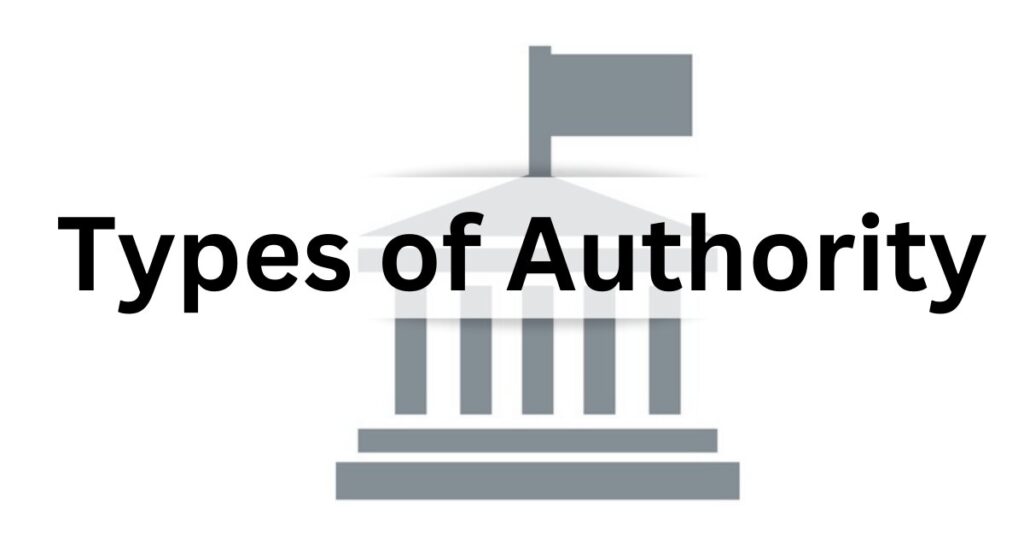
Types of Authority in Organizations
Structural Authority/Bureaucratic/Rational/Legitimate Authority: This type of authority is derived from the position one holds within the structure of the organization. It is based on job descriptions, responsibilities, rank, seniority, and formal organizational hierarchy.
Expert Authority: Expert authority is derived from an individual’s knowledge, skills, and experience in a specific area. It is based on the perception that the person has specialized expertise and can provide valuable information.
Moral Authority: Moral authority is obtained from an individual’s behaviors, integrity, respect, and goodness. A leader with moral authority is able to influence and inspire others through their ethical conduct and values.
Charismatic Authority: Charismatic authority is based on an individual’s personality and natural powers of leadership. Leaders with charismatic authority have the ability to inspire and motivate others through their charisma and charm.
Other Types of Authority:
Physical Authority: Authority based on physical superiority of an individual.
Parental Authority: God-given authority based on the relationship between parents and their children.
Clerical Authority: Authority based on the relationship between religious leaders and the laymen.
Economic Authority: Authority based on the ability to control money or material possessions.
DIFFERENCE/SIMILARITIES AND RELATIONSHIP BETWEEN MANAGEMENT AND LEADERSHIP
Leadership/Leaders | Management/Managers |
A leader may or may not have an official appointment. | Appointed officially to the position. |
Leaders have the power and authority to enforce decisions as long as followers are willing to be led. | Managers have power and authority to enforce decisions using their position. |
Leaders influence others either formally or informally. Use interpersonal skills to achieve results/goals. | Managers carry out predetermined policies, rules, and regulations. Use rules, policies to achieve results/goals. |
Take risks and explore new ideas. Maintain an orderly, controlled, rational, and equitable structure. / Risk-averse. | Maintain an orderly, controlled, rational, and equitable structure. / Risk-averse. |
Relate to people personally in an emphatic manner. | Relate to people according to their roles or work expectations. |
Leaders feel rewarded from personal achievements. | Managers feel rewarded when fulfilling organizational goals or mission. |
Leaders may or may not be successful as a manager. They are managers as long as they hold the appointment. | N/A |
Addresses “why”, “What” What should be done and why? – Why are things done and going on that way, Why such results? | Addresses “how” and “when”. When and How can the activity/work be done, results be achieved? |
Leadership inspires, motivates, and influences people. | Management controls and clarifies to people. |
Leadership is service and people-focused. | Management is profit and result-focused. |
Leadership is strategy-focused. Concerned with bigger, long-term objectives. | Management is focused on short-term objectives, day-to-day operations/activities. |
Leadership is concerned with fulfillment of goals. | Management is concerned with performance of activities that lead to fulfillment of goals. |
Leadership is concerned with versatility/creativity of employees. | Management is concerned and preoccupied by consistency to standards of operations and procedures. |
Leadership is concerned with alignment of whatever goes on in the organization to policy and set standards and goals. | Management is concerned with accountability to the leadership of what is achieved and whether it’s achieved to the required standard and expectation. |
Leadership is concerned with aligning the people brought in the organization to the organizational policies, mission, and vision. | Management plans and staffs the organization. |
Leadership is more people-focused. | Management is more task-focused and achievement of work targets. |
Leadership originates. | Management Initiates. |
Similarities
- They both share success and failure.
- They both work with focus, and communication is vital to both.
- They both typically evaluate employees.
- They are both accountable for results.
- They use metrics to measure performance.
- They both follow a vision and make their people follow that vision.

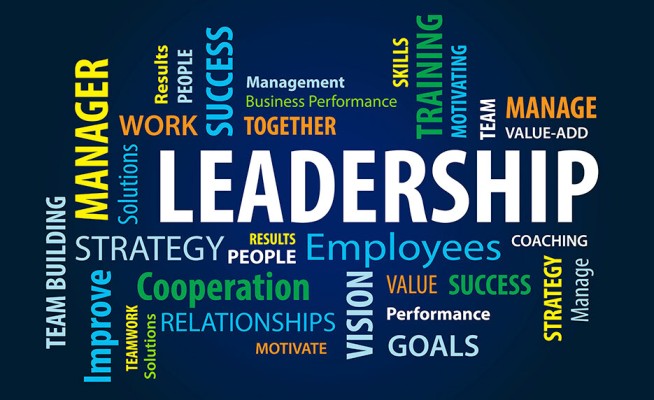
good work done